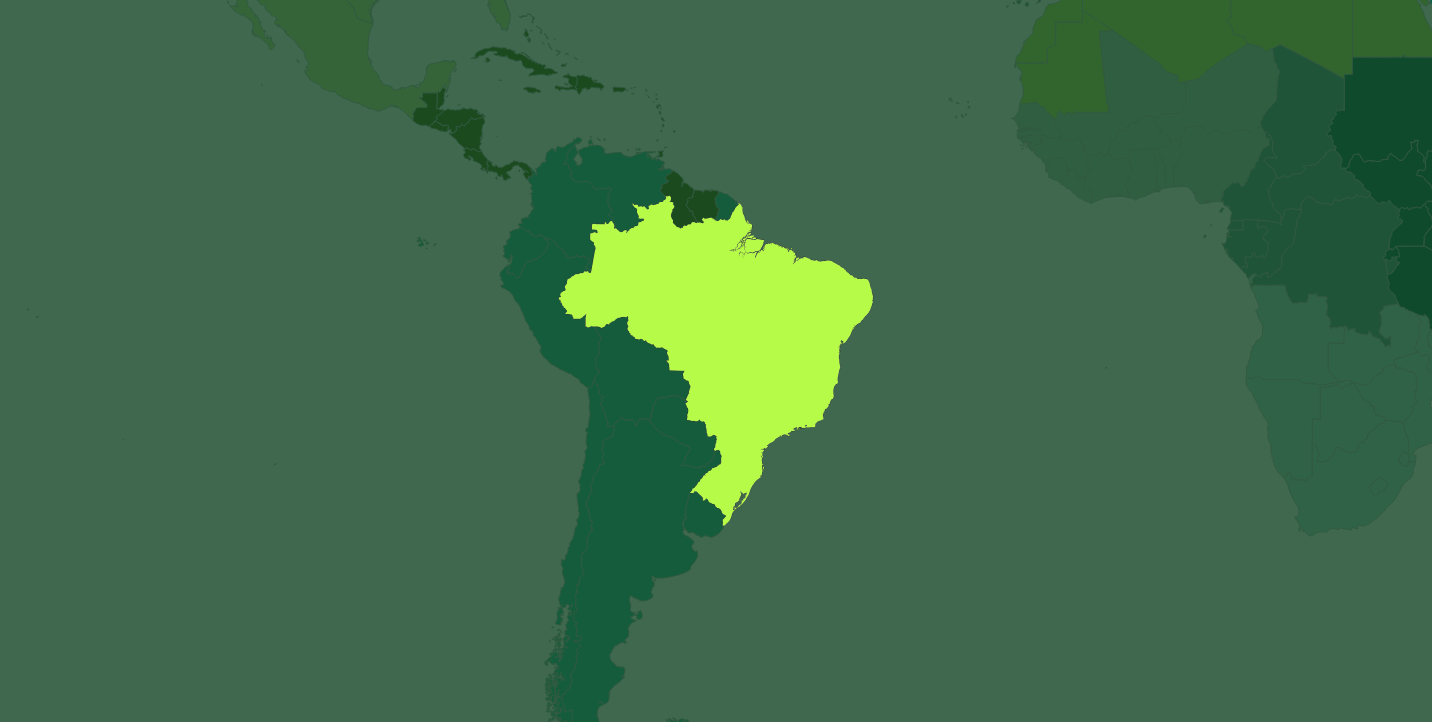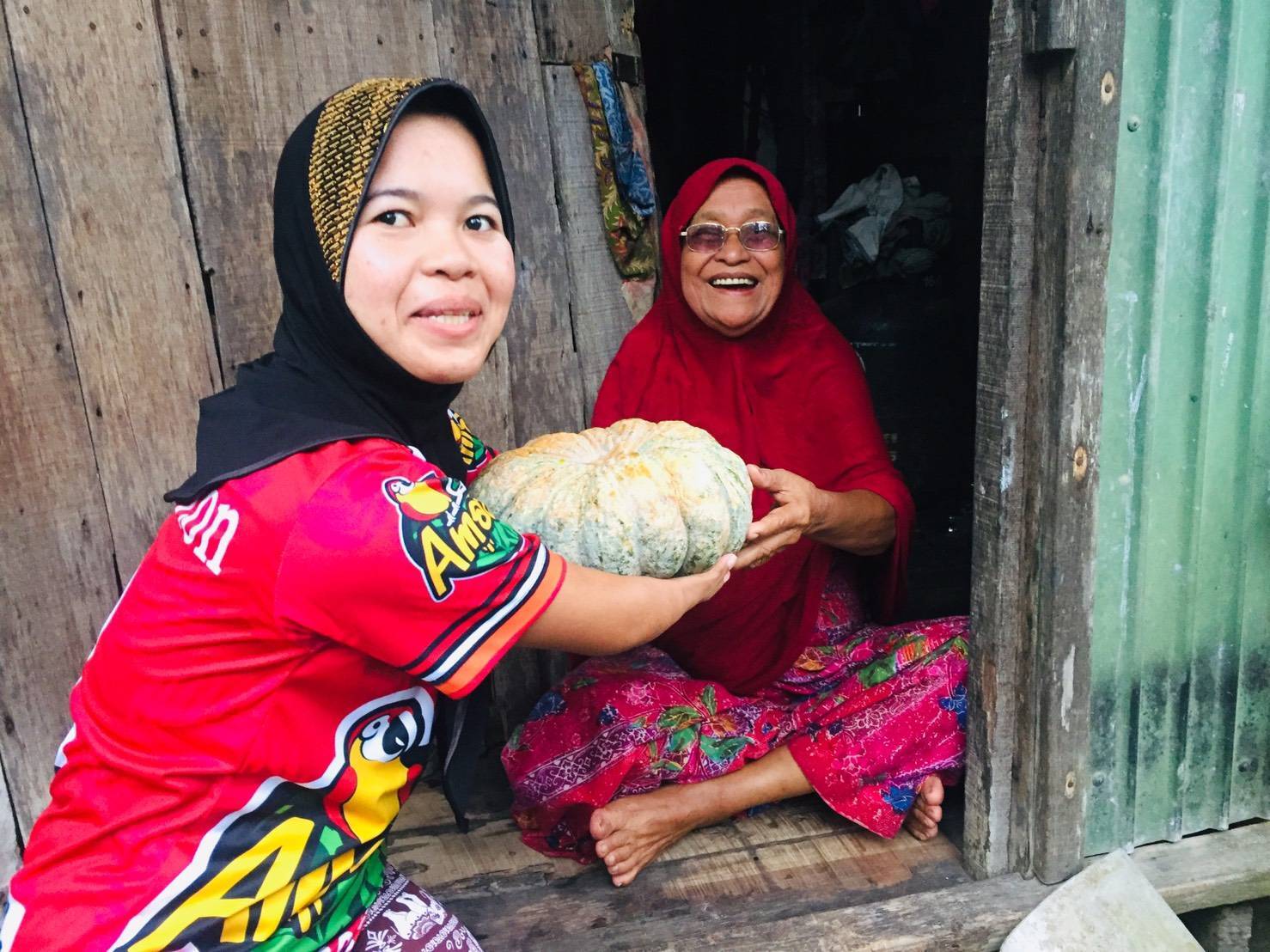Afro-Brazilians in Brazil
-
Profile
An estimated 91 million Brazilians are of African ancestry, according to the 2010 census, which found that more than half (50.7 per cent) of the Brazilian population now identified as preto (black) or pardo (mixed ethnicity).
Many live in quilombos, which were created by fugitive African slaves during the seventeenth and eighteenth century. According to the Fundação Cultural Palmares, there are around 16 million of these descendants, known as Quilombolas, in around 5,000 rural communities across Brazil. The highest concentrations are in once inaccessible areas of Bahía (north-east), Pará (north), Mato Grosso (west), Goiás (central) and Minas Gerais (south-east). Qilombos also exist in major cities like Rio de Janeiro and São Paulo. Quilombos have been recognized since the mid-1990s under ILO Convention No. 169.
Generations of Brazilians of African descent have preserved their cultural heritage and religions. Brazilian Portuguese was richly influenced by the speech of African peoples, and a new Afro-Brazilian vocabulary developed. African religions survive in Brazil today. Afro-Brazilian religions constitute powerful sources of inner strength, enabling believers to reaffirm their African identity. Candomblé and its traditions are central to the lives of many Afro-Brazilians. Religious leaders conduct their ceremonies in Yoruba. Candomblé rituals have been incorporated into the fabric of Brazilian national identity from New Year’s Eve offerings to the ocean (during Revellion), Capoeira dance, Samba circles (rodas) and culinary preferences such as Acarajé fritters. In Umbanda, a syncretic religion, there is a loose association of Roman Catholic saints with African and indigenous deities. It is common in urban areas where it is not possible to establish full-sized Candomblé terreiros, which require relatively large plots of land. There are significant regional differences regarding the practice of Umbanda and many religious leaders borrow from diverse Western and non-Western religious traditions. Despite strong African religious roots in Brazil, charismatic Pentecostalism brought by foreign missionaries is one of the fastest growing religions in Brazil today.
Historical context
After the decimation of the local indigenous population in the seventeenth century, an estimated 3.65 million enslaved Africans were imported to Brazil; the majority of these were brought to Brazil’s first capital, Salvador da Bahia. Urban slave labour differed from plantation life; slaves were not passive victims of the system and many escaped to found their own ‘quilombos’.
Brazil did not abolish slavery until 1888. Initially the Portuguese authorities promoted miscegenation as a way of ensuring a Portuguese presence in under-populated regions. But, fearing the increasing black population, Brazil subsequently opened its country to white immigrants, who were given preference over black people in jobs, housing and education.
The Portuguese attitude towards miscegenation is often offered as proof of their open-mindedness on ethnicity. Racism is, however, an issue of importance in Brazil; although by law all Brazilians enjoy equality, and ethnic discrimination is a criminal offence, for many years advertisements for jobs included the phrase ‘boa aparência’ (‘good appearance’), meaning that only light-skinned people need apply.
Critics have argued that the policy of miscegenation was intended to minimize the African and indigenous presence in the country, by presenting a myth of racial democracy that promoted European identity by encouraging black people to seek social validation exclusively outside of their own ethnic group. By the 1980 Census Brazilians had coined over 136 terms to whiten themselves and avoid racial classification as black.
Throughout the twentieth century, despite formidable barriers of discrimination and repression, Afro-Brazilian activists challenged the deeply entrenched hierarchies of Brazilian society. The Afro-Brazilian press started in 1933 with the publication of A Voz da Raça, for example, and a range of organizations were created with Afro-Brazilian women playing a major role in many. The Frente Negra Brasileira, founded in 1930 as the first national civil rights organization in Brazil, saw ethnicity and gender rights as intimately related through the creation of Frente Negrinhas in 1931; the women’s movement obtained the right to vote in 1932. Women played an important role in the escaped slave communities and are still important leaders in the Candomblé religion today. In 1950, the first national council for black women was established, known as I Conselho Nacional da Mulher Negra. The leading role of Afro-Brazilian women leaders and their organizations is remarkable given the high level of societal marginalization of black women in Brazil. Despite the challenges facing Afro-Brazilian women, they continued to negotiate their own space, within both black and women’s organizations to promote racial and gender equality
The Palmares Foundation was established in 1988 as a state institution to oversee the accreditation and granting of lands to communities of the descendants of enslaved Africans, although for many activists the process is too complex and lengthy. Articles 215 and 216 of the Federal Constitution mandate the protection and preservation of these federally certified lands (or quilombos) and the Palmares Foundation assists in the securing of land titles for Afro-descendant communities. These rural communities are important historic and cultural reference points for the black movement as a whole, despite the fact that the majority of people of African descent in Brazil live in urban areas, often in favelas, where there are no land titles or formal ownership of property.
Significant symbolic progress was made under the government of President ‘Lula’ da Silva. For the first time in Brazil’s history, Lula appointed four Afro-Brazilian national ministers, three of them women: Benedita da Silva, Minister of Social Services; Marina Silva, Minster for the Environment; and Matilde Ribeiro, who headed the Secretariat for the Promotion of Racial Equality, a cabinet-level ministerial position.
Current issues
Despite their sizeable demographic, Afro-Brazilians still face major disadvantages and institutionalized discrimination. The severe inequalities faced by Afro-descendants are reflected in every area of their lives, from health and education to employment and wealth. Average incomes for black households are just 43 per cent those of white households, for example, while average life expectancy for Afro-Brazilians is almost seven years less than for white people. According to the National Network for Social Monitoring and Health of the Black Population, black women are even given less anaesthesia during normal childbirth. Half of all Afro-Brazilians are also illiterate, with 40 per cent not having completed elementary school. Politically, too, black people remain heavily under-represented.
Brazil has also begun to roll out a range of initiatives to combat discrimination in education the labour market. Since 2012, for example, public universities have been obliged to set aside half of their places for public high school students, largely aiming to benefit Afro-Brazilian and students. Similar steps have been proposed to enforce quotas for representation in public administration. However, the issue of quotas remains contentious, and some politicians have campaigned on promises to repeal them.
Among the poorest Afro-Brazilians are the inhabitants of Quilombolas – communities originally established by fugitive slaves in remote rural areas – continue to struggle to assert their cultural identity and historical ties to these lands. However, while these isolated communities were able to maintain their unique cultural traditions and identities, living conditions in these settlements are often some of the worst in Brazil, with lack of access to basic services such as sanitation and some of the highest
poverty rates in the country. Official government data suggests that poverty rates in these communities are as high as 75 per cent, three times higher than levels among the general population. Current programmes includes granting collective land titles as well as improving roads and providing sanitation, water, education and health services. Titling is viewed as all-important since the large majority of these settlements lack legal title; some quilombos that existed before major cities like Rio de Janeiro and São Paulo were established eventually became absorbed as poor urban neighbourhoods.
Profound inequality is also evident in cities, too, with many Afro-Brazilians forced to reside in the most dangerous urban areas. With little opportunity to improve their lives, young Afro-Brazilian men in particular have been drawn into drug gangs and violence – an acute issue in a country where, according to the Mexico-based organization Seguridad, Justicia y Paz, 19 of the 50 most violent cities in the world are located. Afro-descendant youth have been disproportionately exposed to these threats. Homicide remains the main cause of death among Brazilian youth, particularly affecting young black males living in favelas and urban areas. Faced with situations of extreme violence, police and state security forces frequently resort to the use of lethal force in an effort to curb the violence. Brazil remains one of the most violent countries in the world, with an estimated 61,600 homicides in 2016. Of these, black male youth are the most vulnerable, with police killings no exception: of the 4,224 people killed by police in 2016, more than three quarters (76 per cent) were black and 80 per cent aged between 12 and 29. The situation grew even worse the following year. In 2017, 63,880 people were murdered, an increase of 3 per cent, and again the majority of victims were young, male, poor and black.
Academic research has demonstrated the powerful impact of skin colour on economic opportunity, with studies showing that even within the same family, lighter-skinned siblings have greater socio-economic opportunities. Most Afro-Brazilians lack economic power, political influence and effective representation, and are reassessing the doctrine that has been taught for centuries – that embranquecimento (whitening) offers a route to socio-economic improvement.
What commentators have described as a ‘dictatorship of whiteness’ remains pervasive in literature, television programmes, magazine stands and even store window displays. This cultural dominance is especially pervasive in mass media. Activists and researchers have repeatedly criticized the roles assigned to blacks in television shows and soap operas, arguing that they reinforce established stereotypes that marginalize or silence them.
Nevertheless, there has been some evidence of progress in the situation of Afro-Brazilians. Indeed, a large proportion of the 30 million Brazilians who have left poverty over the past decade are black. Most importantly, more and more Afro-Brazilians are going to court about racism and winning settlements. This has been driven in part by a growing community consciousness: many Afro-Brazilians are becoming aware of the degree to which their identities have historically been suppressed. This has encouraged the development of hundreds of civil society organizations and media platforms.
While some Afro-Brazilians see racism as primarily a cultural problem to be solved through the development of black identity, others believe the struggle against racism must seek to change economic, social and political structures. The Afro-Brazilian movement has contributed significantly to policy changes in all of these areas to improve their quality of life.
Related content
Latest
-

16 April 2024
MRG and partners in Brazil submit a report on women and girls with disabilities and women caregivers from Black and indigenous communities
This alternative report highlights the issues faced by Brazilian Black and indigenous women and girls with disabilities and family…
-

11 March 2024
Empowering Voices: A call for intersectional inclusion in disability rights
Focusing on intersectionality and cross-movement collaboration is crucial to addressing global issues such as climate change.
-

8 March 2024
MRG and partners in Brazil submit a report on Black and indigenous children with disabilities
This alternative report to the Committee on the Rights of the Child (CRC) highlights the issues faced by Brazilian Black and indigenous…
Reports and briefings
-
1 June 1995
No Longer Invisible: Afro-Latin Americans Today
The distinct but extraordinarily diverse ethnic and cultural identities of Afro-Latin Americans have received little official recognition….
-
Our strategy
We work with ethnic, religious and linguistic minorities, and indigenous peoples to secure their rights and promote understanding between communities.
-
-
